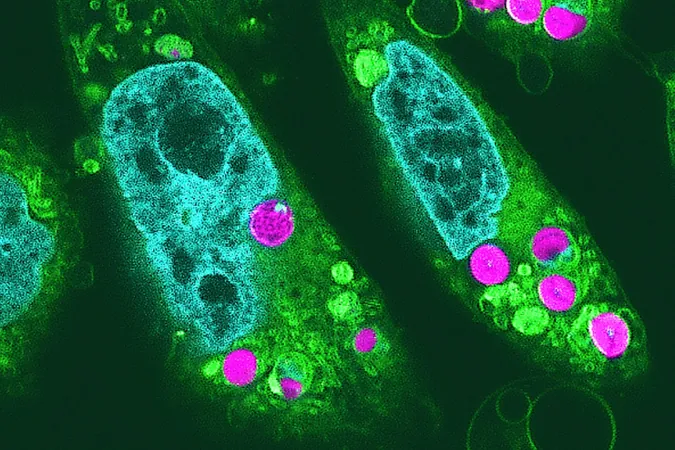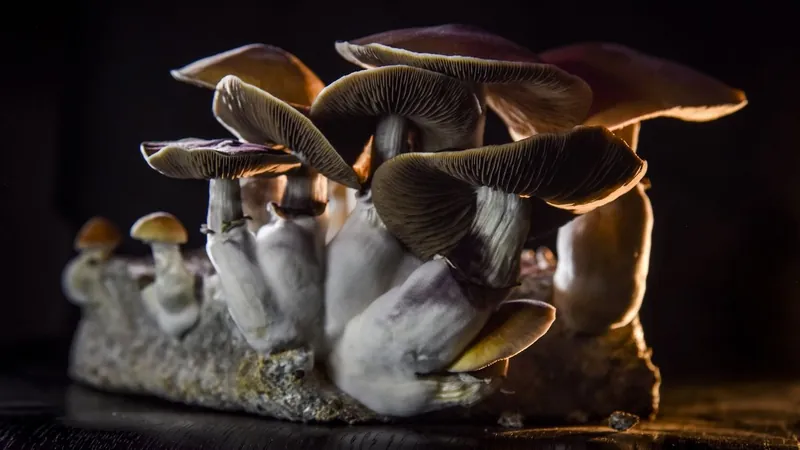
Revolutionary Breakthrough: Scientists Create Solar-Powered Hamster Cells!
2024-11-17
Author: Lok
Introduction
Imagine the convenience of charging your energy levels just by soaking up the sun! Traditionally, the magical ability to harness sunlight for energy has been the realm of plants and algae, but groundbreaking research from Japan has changed the game. Scientists have successfully engineered hamster cells to photosynthesize, effectively creating solar-powered animal cells!
The Breakthrough
In a remarkable study published on October 31 in the prestigious Proceedings of the Japan Academy, researchers extracted chloroplasts—the essential components that allow photosynthesis—from red algae and introduced them into hamster cells. This innovative fusion enables the animal cells to convert sunlight into energy, a feat once believed impossible.
Insights from the Research Team
Sachihiro Matsunaga, a co-author from the University of Tokyo, expressed amazement at this breakthrough, stating, 'As far as we know, this is the first reported detection of photosynthetic electron transport in chloroplasts implanted in animal cells.' This discovery could pave the way for entirely new avenues in bioengineering and cellular biology.
Initial Challenges and Success
Initially, the researchers feared that the hamster cells would digest the chloroplasts shortly after their introduction. However, they were astonished to find that the implanted chloroplasts continued to function effectively for up to two days, producing energy through photosynthesis. They confirmed this activity through advanced imaging techniques and light pulse experiments, ensuring that photosynthetic processes were indeed occurring.
Practical Applications and Future Prospects
While the idea of walking solar-powered animals is fascinating, the research team is focused on practical applications. Envisioning a future with 'planimals'—a hybrid of plants and animals—these engineered cells hold tremendous promise for artificial tissue engineering. One of the major challenges in lab-grown tissues is the issue of hypoxia (low oxygen levels), which stunts cell growth and division. By incorporating these photosynthetic hamster cells, researchers believe they can enhance oxygen levels within the tissues, facilitating growth and improving the viability of lab-grown organs and other medical applications.
Growth Rate Observations
In addition to oxygen production, the research team observed that the chloroplast-infused hamster cells exhibited an increased growth rate. This suggests that these photosynthetic cells could also supply a carbon source to the animal cells, acting as both energy producers and food sources.
Broader Implications
The implications of this research are staggering, not just for the fields of biology and medicine but also for our understanding of cellular potential. The team is eager to continue their investigations into these 'planimal' cells, raising questions about the future of biotechnological advancements, sustainability, and even how we integrate artificial elements into living systems.
Conclusion
Who knows? The future may hold a world where not only do we have solar-powered devices, but our pets and medical tissues are harnessing the sun for energy, transforming the landscape of biology as we know it!




 Brasil (PT)
Brasil (PT)
 Canada (EN)
Canada (EN)
 Chile (ES)
Chile (ES)
 España (ES)
España (ES)
 France (FR)
France (FR)
 Hong Kong (EN)
Hong Kong (EN)
 Italia (IT)
Italia (IT)
 日本 (JA)
日本 (JA)
 Magyarország (HU)
Magyarország (HU)
 Norge (NO)
Norge (NO)
 Polska (PL)
Polska (PL)
 Schweiz (DE)
Schweiz (DE)
 Singapore (EN)
Singapore (EN)
 Sverige (SV)
Sverige (SV)
 Suomi (FI)
Suomi (FI)
 Türkiye (TR)
Türkiye (TR)